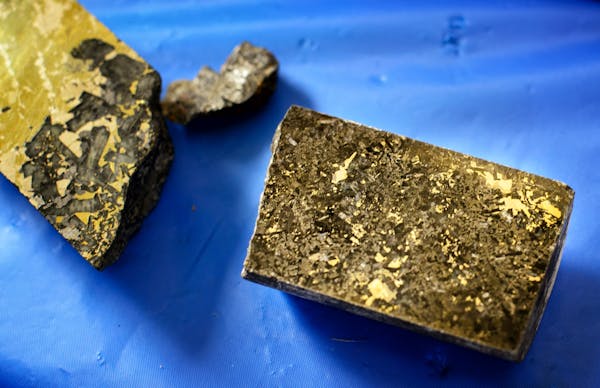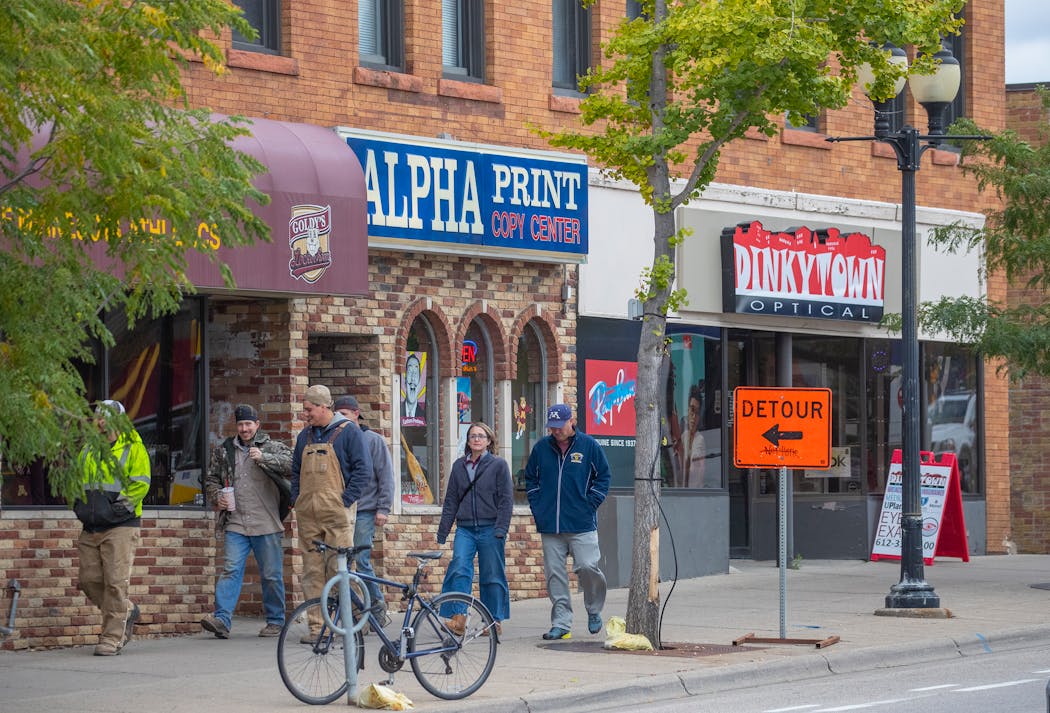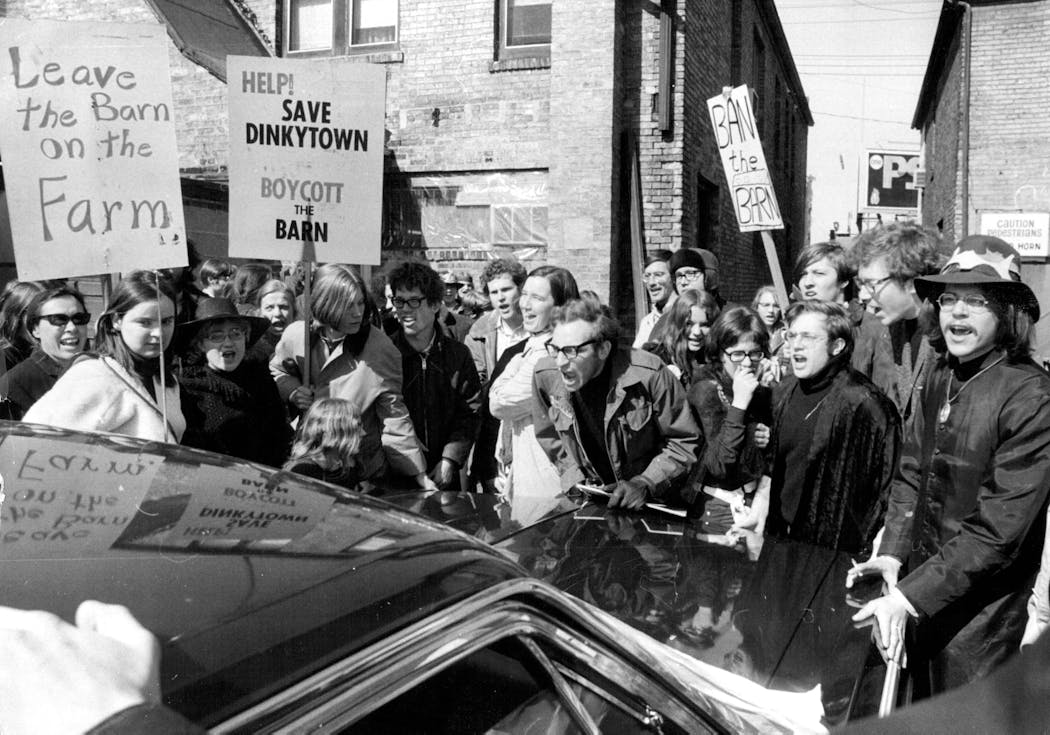How did Dinkytown in Minneapolis get its name?
Listen and subscribe to our podcast: Via Apple Podcasts | Spotify | Stitcher
Few places are more closely associated with college life in Minnesota than Dinkytown, the southeast Minneapolis commercial hub where generations of University of Minnesota students have grabbed beers, books and a bite to eat.
The name "Dinkytown" has become synonymous with the area's small-scale charm. But Sue Cirillo, whose son attends the U, wanted to know the history behind this unique moniker.
"It's hilarious," said Cirillo, who visits campus several times a year from the East Coast. She sought answers from Curious Minnesota, the Star Tribune's community reporting project fueled by great reader questions.
Cirillo isn't alone. Historians and students have been inquiring for many decades about the origins of the Dinkytown name. Almost every year, a new crop of journalism students shows up at The Book House, a Dinkytown staple, to interview owner Kirsten Eide-Tollefson on the subject.
All this probing has produced myriad theories, involving everything from old trains to Gopher football players. But no one has definitively cracked the case — yet.
"It's a very interesting question and it's almost better that it's slightly mysterious," said Eide-Tollefson, a co-founder of the nonprofit Preserve Historic Dinkytown.
There is consensus, however, that the name relates to the area's diminutive geographic size and first appeared in newspapers and directories in the 1940s.
One of the most prominent theories involves the building on the corner of 4th Street and 14th Avenue SE that formerly housed Gray's Drugstore — now home to Gray's coffee shop. The name "Grodnik" is carved above the doorway, referring to either the original owners or tenants of the building.
Some have suggested that surname meant something like "small town" or "dinky town" in a Slavic language — and the name stuck. A Russian language professor disputed that translation in the Minneapolis Tribune in 1977, however.
"That was the story that for a number of years had the most votes," Eide-Tollefson said. "We don't know the facts."
Bill Huntzicker, a retired journalism professor, detailed at least 10 theories in his 2016 book called "Dinkytown: Four Blocks of History."
"Nobody really knows, but the people who do have theories have very strong feelings about them," he said.
Several possible explanations involve railroading. The term "dinkies" was historically used to describe smaller-than-normal shuttle trains or streetcars, according to rail historian Aaron Isaacs. But he added that no trains like that traveled in the Dinkytown area.
Huntzicker said that many workers in nearby rail yards came to the area to eat, possibly bringing the "dinky" name with them.
"I sort of lean toward that [idea] but obviously I can't prove any of it," he said.
Some say Dinkytown's origins could have stemmed from a name for a theater where the Varsity Theater stands today, or from Gopher football player Frank "Dinky" Rog, according to Huntzicker's book.
World War II veterans may have coined the name, or fraternity members, or two brothers that owned a local dry-cleaning shop, Huntzicker's book speculates. The first time the moniker appeared on a commercial property was the "Dinky Town Dime" variety store, which opened in the 1940s.
The area's most famous resident was Bob Dylan, who once lived above Gray's Drugstore during the brief time he was a student at the University of Minnesota, Eide-Tollefson said, adding that many tourists have visited and gestured at the apartment in pictures and videos.
Some people have fought passionately over the years to preserve the area's dinky qualities from encroaching development.
The most well-known example occurred in 1970, when hundreds of students and other Dinkytown enthusiasts defended several old buildings housing local businesses from being demolished to build a Red Barn fast-food restaurant. After weeks of protests, the buildings were ultimately razed. But the Red Barn was never built.
Development proposals in 2013 prompted a flurry of debate over the future of the area. But the neighborhood received some protections in 2015, when the city of Minneapolis recognized parts of Dinkytown as a local historic district.
Eide-Tollefson and Huntzicker believe Dinkytown's future is uncertain due to endless construction of new housing. But the name — and ongoing debate of its origins — will continue.
"We like questions with no clear answers, don't we?" Huntzicker said.
If you'd like to submit a Curious Minnesota question, fill out the form below:
Read more Curious Minnesota stories:
Why was I-94 built through St. Paul's Rondo neighborhood?
Why does Minneapolis keep planting trees under power lines?
Why are vehicle tabs more expensive in Minnesota than in other states?
Minneapolis plows its alleyways. Why doesn't St. Paul?
Why is Minnesota the only mainland state with an abundance of wolves?
Why is Minnesota more liberal than its neighboring states?
Correction: Previous versions of this article misstated the current occupant of the Grodnik building. They also misstated which buildings were slated for demolition during the 1970 protests.






